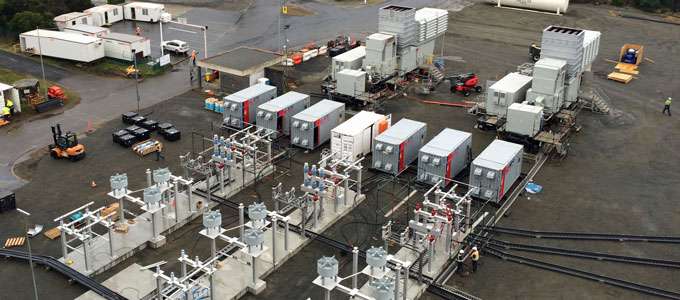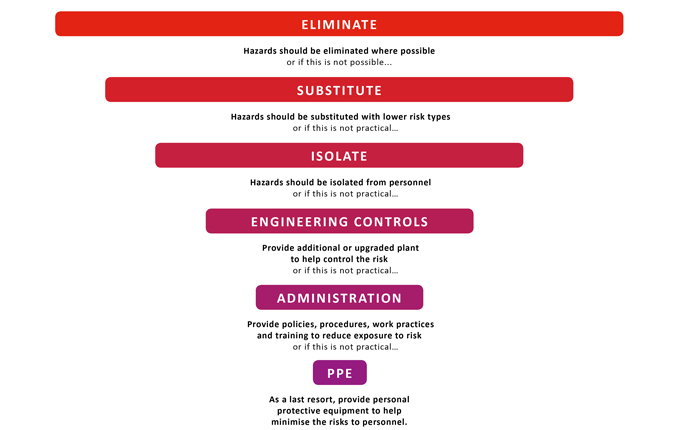THOUGHT LEADERSHIP
Keeping construction workers safe around high-voltage assets
Safety risks around high-voltage electrical assets are far from trivial, particularly those risks associated with earthing hazards during construction activities.
Keeping workers and contractors safe should be one of the highest business priorities. Safe systems of work and a strong safety record also ultimately benefit a business’s reputation, sustainability and long-term profitability. But achieving safety around high-voltage electrical assets means knowing your risks and how to control them, and one of these is the risk of an earthing-related hazard.

What is an earthing hazard, and how is it managed?
During a high-voltage electrical earth fault, such as a cable or equipment failure, electrical current passes from the faulted cable or equipment into the earth’s surface. One main function of an earthing system is to ensure the electrical protection system operates correctly (i.e. automatically turns the power off in a safe and controlled manner). As current passes into the ground, a localised voltage rise can be produced on the ground surface. Depending on a number of factors, this voltage rise can be harmful in the context of high-voltage installations.
As with any engineering design, the design and performance of an earth system is based on a set number of inputs. Some inputs are fixed; others are variable and may change over time. It is important for all owners of high-voltage assets to be aware of the variable components that their high-voltage earth system is designed to consider, and to ensure the safety of the system by taking corrective actions as deemed appropriate by standards and guidelines.
One such variable to consider is the safety of personnel and the public during construction activities, both within the site boundary and outside its footprint. According to Earthing Guideline 0 as referenced from Australian Standard AS 2067 (Draft 2014), the risk profile presented by the site will be affected by the increased presence of construction staff. This increased risk needs to be considered and addressed, and should result in site direction to construction staff.
Common earthing-related hazards
In general, leading contractors and asset owners pay a lot of attention to how earthing-related hazards and safety criteria may change when working in and around high-voltage assets. However, a range of common mistakes can be made during construction activities, which can introduce earthing-related hazards.
Typical mistakes include (but are not limited to):
- incorrect placement of temporary metallic security fencing or road barriers
- unnecessary removal or thinning of crushed rock layers
- exposure or breakage of subsurface earth systems
- incorrect placement of site sheds
- incorrect specification and arrangement of low-voltage electrical supplies for site sheds
- incorrect placement of equipment and infrastructure laydown areas
- incorrect planning of the work activities and procedures related to craning or elevated work platforms
- lack of site awareness regarding concealed and visible electrostatic and electromagnetic induction hazards.
What do you need to know?
High-voltage asset owners and construction contractors should ask these questions to ensure the safety of their construction personnel:
- Do I know where the high-voltage earth system is located?
- Does the work I am doing involve working inside or in close proximity to a high-voltage earth system?
- How far outside the earth system boundary do I need to consider the influence of the earth system? Is my work within this zone?
- Has this site’s earth system performance been assessed, and how recent was the last earth system audit? Based on the previous audit results, are the expected earthing-related hazard zones around the site clearly marked and controlled?
Although these questions may seem simple, without a high-voltage earthing layout drawing, a previous earthing audit report or intimate knowledge of the design criteria used to design the high-voltage earth system, you may not be able to answer the questions above with any certainty.
What are the right solutions to control defined hazards?
Solutions to possible causes of earthing-related construction hazards can vary from basic to complex. The most important thing is for the hazards to be properly assessed and managed in accordance with the risk management hierarchy of controls and the applicable national or international standards and guidelines.
In some cases, the traditional approach of earthing all metallic infrastructure may introduce hazardous voltages into the work zone rather than eliminating them.
How to build earthing safety into project planning
To ensure earthing safety during construction is not overlooked, asset owners should integrate a construction earthing assessment as a line item in their initial project schedules (during construction planning) and asset management plans. They should also provide constructors with an overview of typical construction activities that may present earthing hazards.
Because construction sites can change in layout, size and arrangement over time, it is important that a reassessment of possible introduced earthing-related hazards is also integrated into the construction plan, to ensure that earthing safety is maintained throughout the construction process.
The best results are achieved when the asset owner, the constructor and earthing specialists work together to develop appropriate project solutions to provide a safe working environment.
To discuss how Entura can help you assess your earthing safety risks, please contact Patrick Pease.
MORE THOUGHT LEADERSHIP ARTICLES
June 20, 2016







